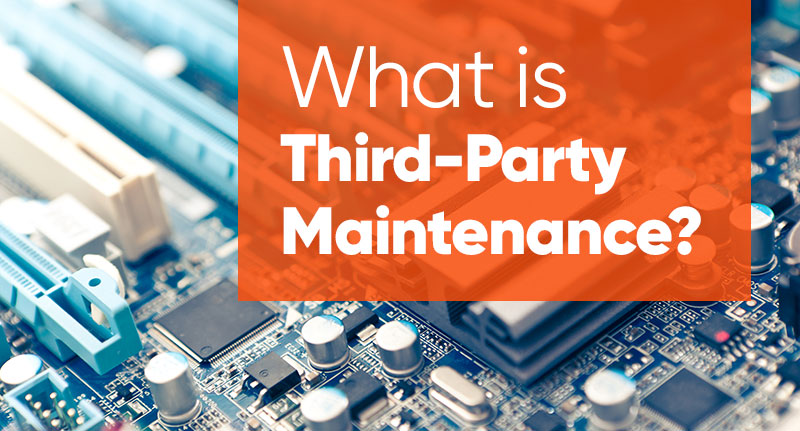If there was a way to save 60% on maintenance for your data center assets, wouldn’t that be worth considering? Thanks to the emergence of reliable third-party maintenance (TPM) offerings, companies now can stretch their IT budgets while extending product lifecycles on a full range of networking, server and storage gear.
What is Third-Party Maintenance And Why Should I Care?
As more and more companies now are looking at hardware maintenance as “non-strategic,” there is growing momentum for more affordable, flexible support options. So what is third-party maintenance and why should I care?
Hardware Support
TPM is hardware support provided by independent service providers (i.e., not an equipment manufacturer). Depending on equipment, location and product density, trusted industry watchers, including Gartner, we believe, have challenged conventional thinking about how Infrastructure and Operations (I&0) leaders can best approach ongoing IT and equipment maintenance needs.
In “10 Ways to Reduce the Cost of Acquiring Servers,”1 Gartner states that “I&O leaders who restrict themselves to vendor-supplied maintenance may be missing an opportunity for significant warranty and post-warranty cost savings.” While potential budget relief alone makes TPM worthwhile, there’s more. TPM providers typically are more attentive, tailored and customer-friendly than manufacturers’ “one size fits all” mode. Also, don’t underestimate TPM’s more flexible contract terms, durations and conditions.
What Can Third Party Maintenance Do For You
So what’s the best way to investigate what TPM can do for you? Start with a maintenance audit. If you haven’t performed one or are unsure what it entails, most likely you have been overspending on maintenance. Leading TPM providers welcome the opportunity to provide an exploratory risk/benefit review of your IT assets, complete with detailed steps and recommendations for implementing TPM best practices as your coverage option for certain network, server and storage assets.
TPM lessens the stranglehold manufacturers maintain over their customers as now you can upgrade based on your timetable and not according to their dictated refresh cycles. Now, when original warranties expire, shift the gear to TPM and extend the useful lifecycle of your investments. By doing so, end-of-sale (EOS) and/or end-of-life (EOL) dates no longer mean end of the road for equipment that still performs reliably.
This approach applies to all data center equipment, including storage infrastructure. In a research report, entitled, “Lower Both Storage Acquisition and Ownership Costs by Using Third-Party Maintenance,”2 Gartner details the different steps you can take to leverage independent, vendor-agnostic storage maintenance to the fullest.
It’s no wonder that growing numbers of companies are looking at a hybrid support model that combines manufacturer support where necessary (typically when software upgrades are still important) and TPM for all other IT assets along with sparing, where appropriate.
All things considered, there’s never been a better time to board the TPM bandwagon. In this era of multi-vendor IT environments with myriad maintenance agreements and expanding global footprints, TPM can put all your assets on one maintenance contract. As incentive, ponder the IT improvements possible with the savings you unlock by implementing TPM into your maintenance and support roadmap. There must be some innovation or expansion you’re itching to underway.
Want to learn more?
Explore more of our resources including whitepapers, webinars, and case studies. You can also contact us at one of our global offices here.
1 Gartner, 10 Ways to Reduce the Cost of Acquiring Servers, Daniel Bowers, October 27, 2017.
2 Gartner, Lower Both Storage Acquisition and Ownership Costs by Using Third-Party Maintenance, Stanley Zaffos, March 3, 2017.



